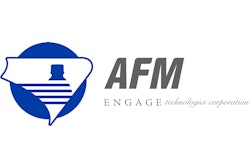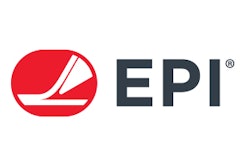Labels do more than identify—they inform, protect, and brand. In this Package This episode, explore key labeling technologies that power modern packaging lines: from pressure-sensitive labelers and print-and-apply systems to shrink sleeve machines and stretch sleeve applicators. See how these machines handle everything from clamshells and shipping cases to bottles and tubs. Whether you're a packaging pro or just getting started, this short episode will “label” you informed. Watch now and discover the right equipment for your line!
See more from ID Technology here.
See more from EPI here
See more from American Film and Machinery here.
Hello, and welcome back to Package This — your guide to packaging machinery and materials.
Today’s episode is all about labeling equipment.
Pressure-Sensitive Labelers
One of the most common types of labeling machines is the pressure-sensitive labeler, which applies primary labels to containers, bottles, bags, and shipping cases.
In this example of a pressure-sensitive label applicator from EPI, a ProMach product brand, you can see how various sizes and shapes of containers — like clamshells and bottles — are fed through a conveyor that is servo-synchronized with the labeling head.
The peel blade removes the adhesive-backed label from the liner and applies it with pressure, ensuring it adheres to the item. MFlex systems from EPI can handle a wide range of round and non-round products, even in harsh environments.
Print-and-Apply Labeling Systems
Another popular option is the pressure-sensitive label printer/applicator, also known as a print-and-apply system. These machines combine label printing and dispensing in one unit and are used in a wide range of applications — from barcode and shipping labels to warning labels.
In this print-and-apply system from ID Technology, a ProMach product brand, shipping cases are conveyed through the labeling area, where one or two labels are printed and applied by a CarbonFlex™ carbon-fiber servo applicator. The CarbonFlex system safely and accurately applies labels to cases or shrink-wrapped trays, even when product handling isn’t perfect — making it ideal for real-world scenarios.
Shrink Sleeve Labelers, Neck Banders & Heat Tunnels
Shrink sleeve and neck banders apply full body labels or neck bands around the neck of containers to shrink film to conform snugly to the shape of the package.
Here we see the LX-150, a shrink sleeve label applicator from American Film & Machinery, designed for middle, full-body, and full-body-and-cap applications at low to moderate production rates.
It’s used across industries including food and beverage, pharmaceutical, nutraceutical, health and beauty, consumer goods, chemical, and other manufactured goods. Because of its versatility, the LX-150 is also ideal for the changing needs of contract packagers. As a timing screw spaces out the cans, the machine pulls pre-printed sleeves from a roll, cuts each sleeve, and drops it over the can. After a label brushdown, the cans move through a steam tunnel that shrinks the label snugly around each container.
Stretch Sleeve Labelers
Stretch sleeve labelers use no adhesive or heat. Instead, they apply elastic plastic sleeves that hold tight around containers — like a wraparound sleeve for a plastic cat litter tub.
Other Labeling Equipment
Other types of labeling machines include:
- Roll-fed labelers, which separate and apply labels from a continuous roll.
- Pre-cut label applicators, also known as cut-and-stack labelers, which run stacks of pre-cut labels.
- Specialty labeling equipment like RFID encoders and EAS applicators, which apply tracking or security labels after filling and sealing.
Keep in mind that the best labeling machine for your operation will depend on factors like container shape and surface, label placement in the production line, and environmental conditions during packaging, transport and delivery.
That’s it for this episode on labeling! Thanks for watching. For more videos on packaging equipment and materials, subscribe to Packaging World’s YouTube channel to catch the entire Package This series.
And if you’re shopping for labeling equipment or other machinery, check out PMMI ProSource at ProSource.org — a searchable directory with over 1,000 packaging and processing suppliers.
Until next time — keep on packaging!


































